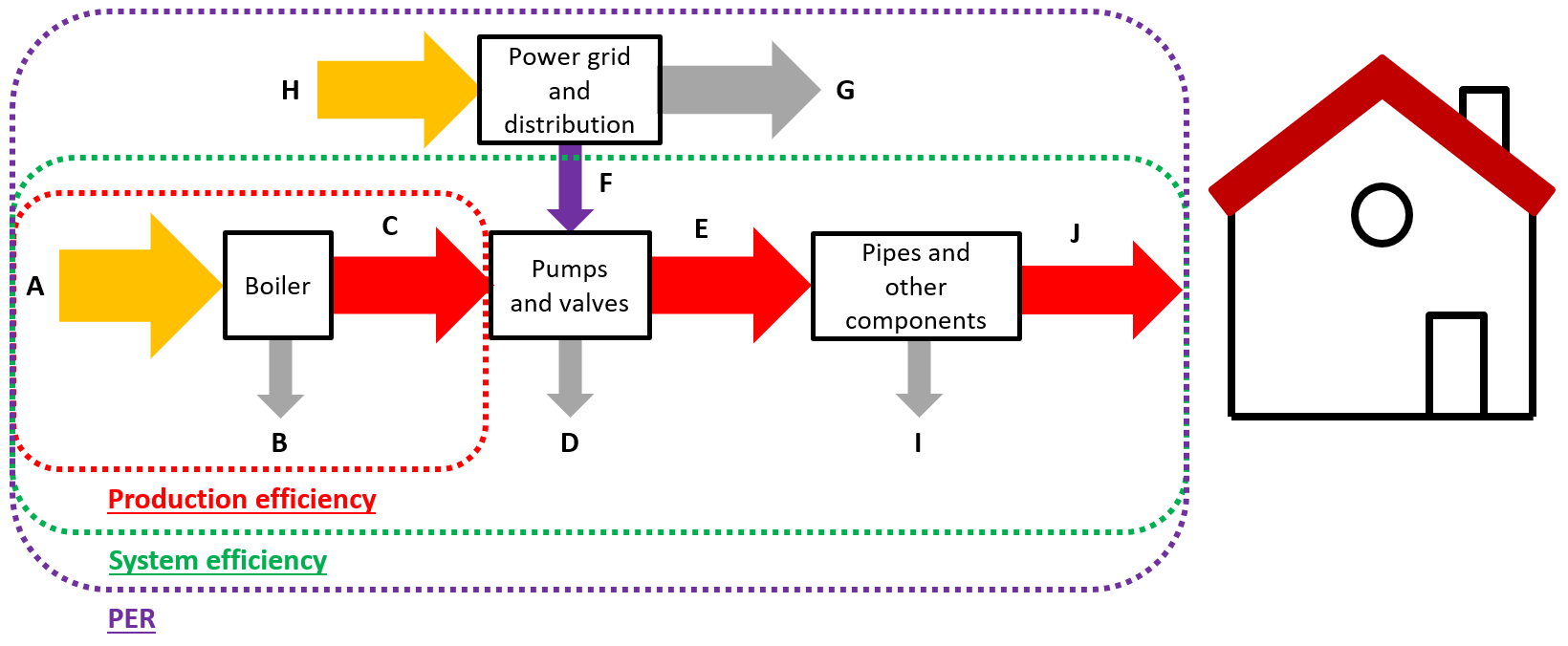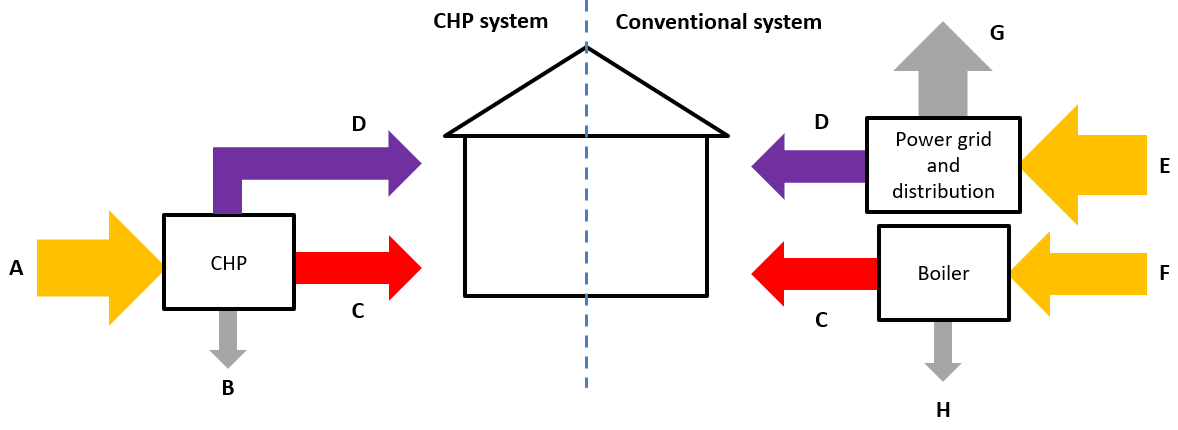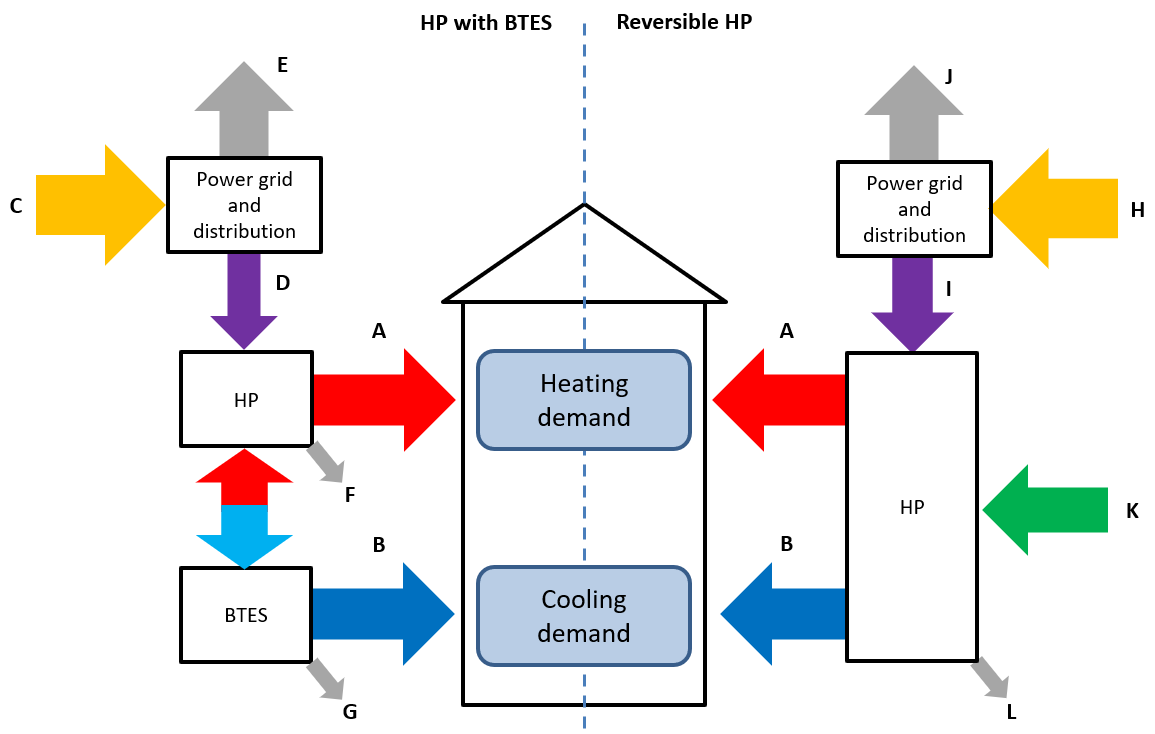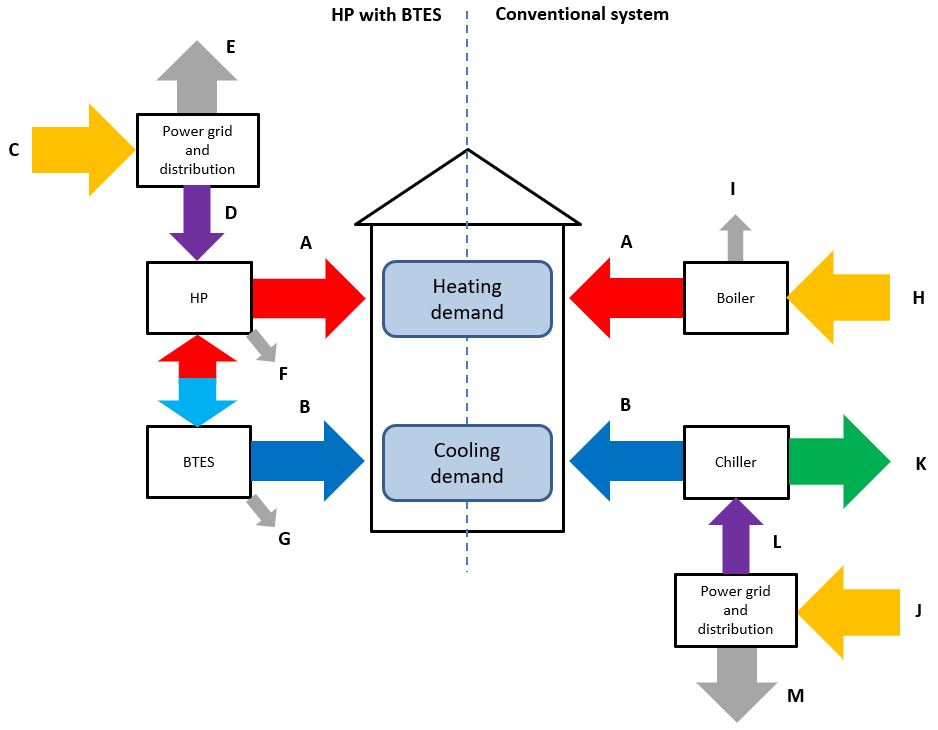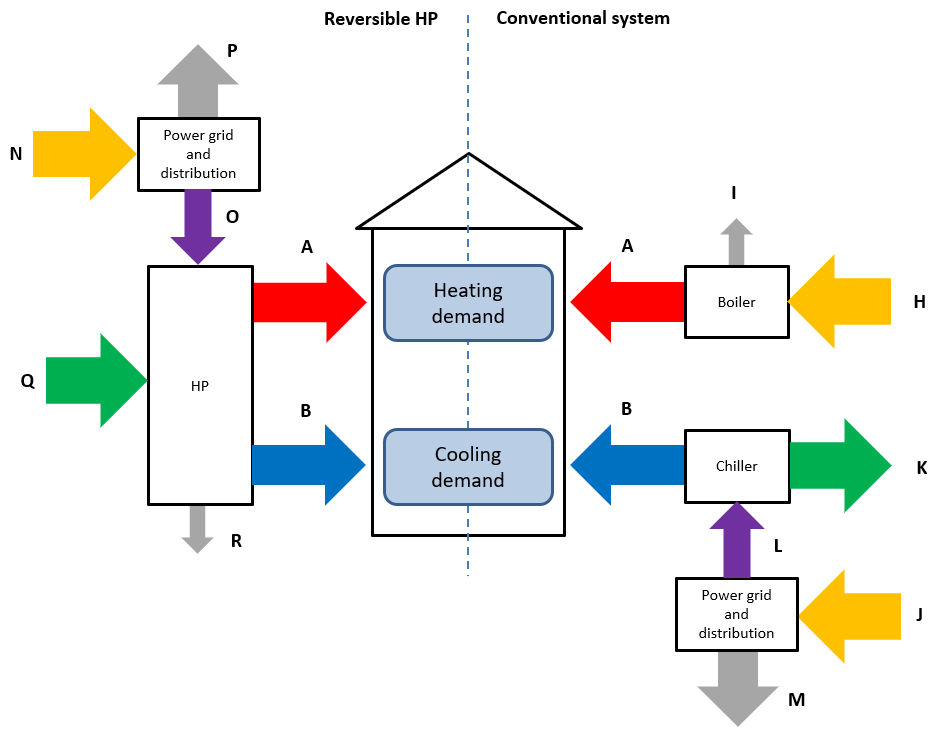The Pareto calculations are divided into the three sections “Energy”, “Comfort” and “Investment”.
Energy
In the “Energy” section the efficiencies are calculated. Any efficiency ratio always has the same principle for calculation. The efficiency is the useful outgoing energy or power divided by the ingoing energy or power. The production efficiency, system efficiency and PER (Primary Energy Ratio) are visualised in the figure below. The yellow arrows represent the primary energy, the red arrows the useful thermal energy, the purple arrow the electricity and the grey arrows the thermal losses.
The efficiencies are calculated as follows.
The RPES (Relative Primary Energy Savings) is typically used for CHPs (Combined Heat and Power), but can also be used for a complete system with other production units. The RPES is the percentage amount of primary energy savings compared to a fictional reference case. The calculation for a CHP system is as follows.
The useful thermal energy (C) and electricity (D) is the same for the CHP system as for the conventional system. The conventional system as the reference is typically a boiler delivering the thermal energy with a boiler efficiency of 90% and the power grid delivering the electricity with an efficiency of 40% (in Belgium). The RPES is calculated as follows.
The primary energies (E+F) can be calculated by using the conventional efficiencies for heating and electricity.
The PERs are in this case:
Previous examples are however simplistic. A more complex example is, for instance, an HP (Heat Pump) combined with a BTES (Borehole Thermal Energy Storage) system to deliver heating and cooling to a building, compared with a reversible HP which supplies heating and cooling. The heat demand of the first system is delivered by the heat pump, meanwhile extracting the heat from the BTES system (extracting heat is the same as injecting cold in the BTES system). The heat demand of the second system is delivered by the reversible HP. The cooling demand of the first system is delivered by the BTES system and of the second system, it's delivered by the reversible HP working as a chiller.
The system efficiency and PER are calculated as follows.
To calculate the RPES of both systems, it is compared to a conventional reference. First the HP with BTES.
The RPES is calculated as follows.
To calculate the RPES, the efficiencies of the boiler (90%), the power grid (40%) and chiller (300% = 3 EER) are necessary.
The same comparison is done for the reversible HP.
